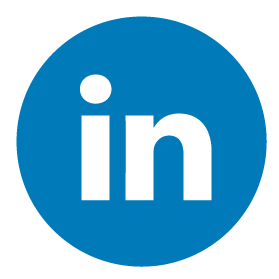The symbol that once has no significance now has a new name and a much more important meaning. While we can skip by clicking the hashtag tab on the keyboard, we should never skip the hashtags in our digital strategies. Using them correctly can raise brand awareness, initiate communication with consumers, and help stakeholders find us more easily.
The hashtags were invented back in 2007 by Twitter employees. Their initial idea was to group tweets with similar topics in one place. This has not changed to date, only the number of platforms on which they can be used has increased.
They always start with the # symbol, which we supplement with a word or words (always without spaces) and we can divide them into popular, relevant, and brand. It is advisable to include hashtags from all three categories in the digital strategy, but also to adapt their use to the network on which we advertise our brand.
Hashtags have the greatest use-value on the network they first appeared. They are used to following the latest news from various fields, engaging in various discussions, or responding to certain trends. Essentially, we can use as many hashtags as we want, but Twitter itself recommends a maximum of two per post.
The way our audience perceives our posts will also depend on the place where we use the hashtag in tweets. If we want to emphasize something, we will put the hashtag at the beginning; by using the hashtag in the middle of the tweet, we will emphasize one word in the post; while adding # at the very end will give context to our post.
It’s a common case that Meta Group platforms copy examples of good practices from other social networks. This was also the case with hashtags, so of course, they are also available on Facebook. Unlike other networks, they have been losing popularity on FB over the years, but recently a new way of using them has emerged – classifying content by topic within private groups. FB groups are getting more value and are something brands should definitely pay attention to. If you intend to use hashtags outside of groups, Facebook itself recommends that it should be 2 to 3 per post. We recommend that their purpose should be to add context to the post, as people on this network do not have the habit of searching by tags.
Instagram is a lot more friendly to hashtags than FB. It allows us to search and track them, group, our content based on them, and even the algorithm itself will try to understand our interests based on the tags we use or review. If we have a business account, we can very easily check what results certain hashtags bring and determine exactly which ones are best for our brand.
The platform itself recommends 3 to 5 tags per post, while we recommend always putting them at the end of the description or even in the first comment below the post, so as not to distract from the text. It is also possible to put them on a story, but as it is no longer possible to search stories by hashtags, it is recommended that their purpose should be exclusively to provide additional context.
YouTube
YouTube is another network where the use of hashtags should not be overlooked. However, we do not have to use them here in the same way as on other platforms. It is enough to highlight the categories to which they belong via tags in the video description, and in that way group them with similar content.
The network itself recommends the use of 3 to 5 tags per video while using more than 15 hashtags can lead to characterizing our content as spam.
TikTok
Using hashtags on this network is two-way useful. They help our videos stand out, but also make it easier for the algorithm to categorize content and bring it out exclusively to stakeholders. #fyp is almost mandatory, and it is recommended to combine niche and trending tags. The optimal number per post is from 3 to 5, and on the Discover page, we can always check which tags are the most popular. It is recommended that we do this often because the trends on TikTok are changing at a high speed.
LinkedIn is a network for professionals, so the use of hashtags on that network must be professional too. One hashtag per post is enough, and you should never put more than five. We can use them to add additional context to our posts or to include them on some of the topics that are already popular on this network. Tags on LinkedIn can also be useful to us as private users because by following those who are important for the industry we are in, we keep up with the latest developments and trends.
Do you skip the hashtags or use their power in your digital communication?



















